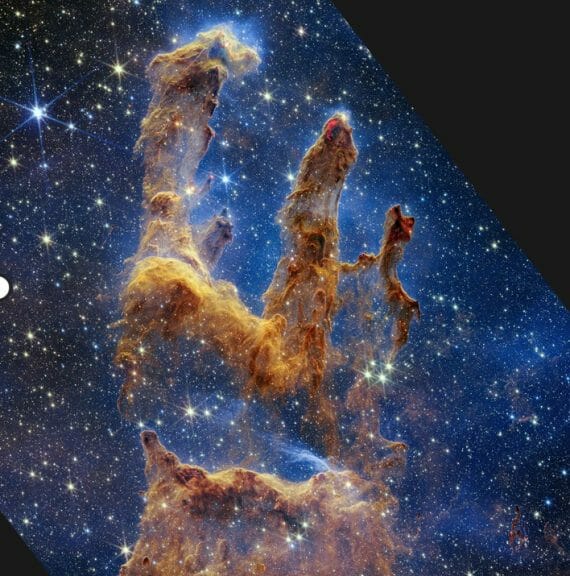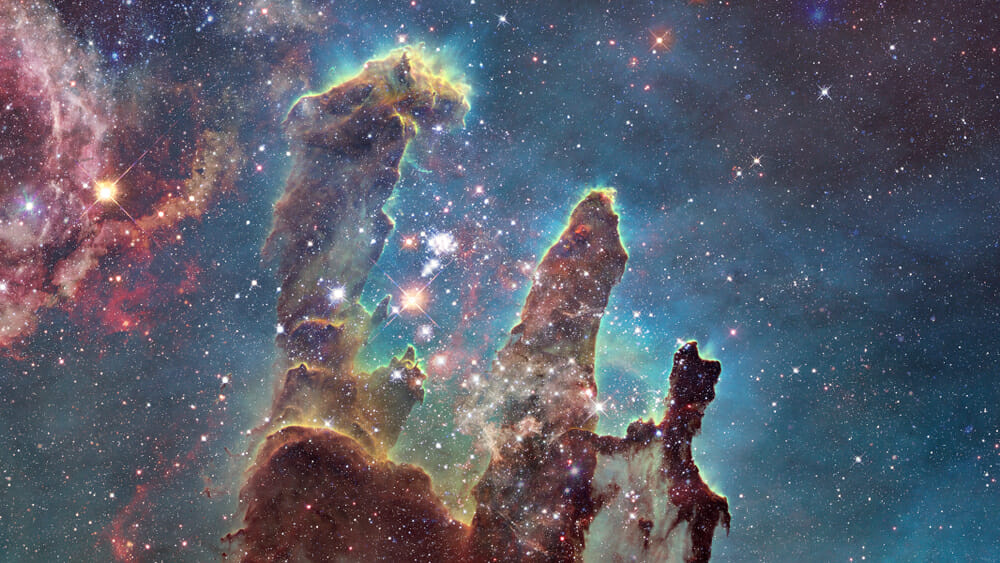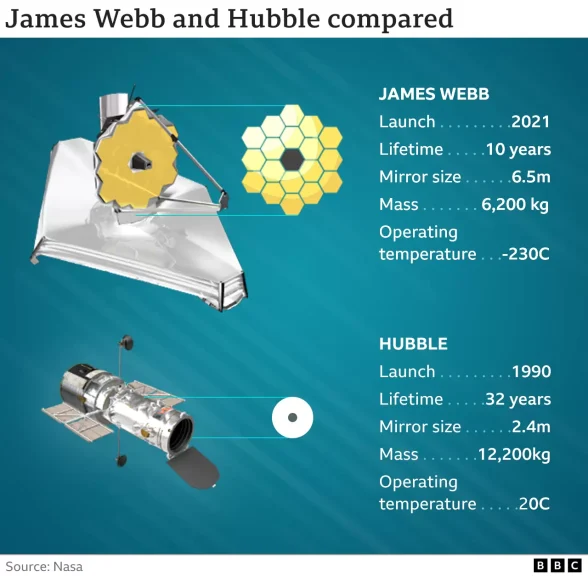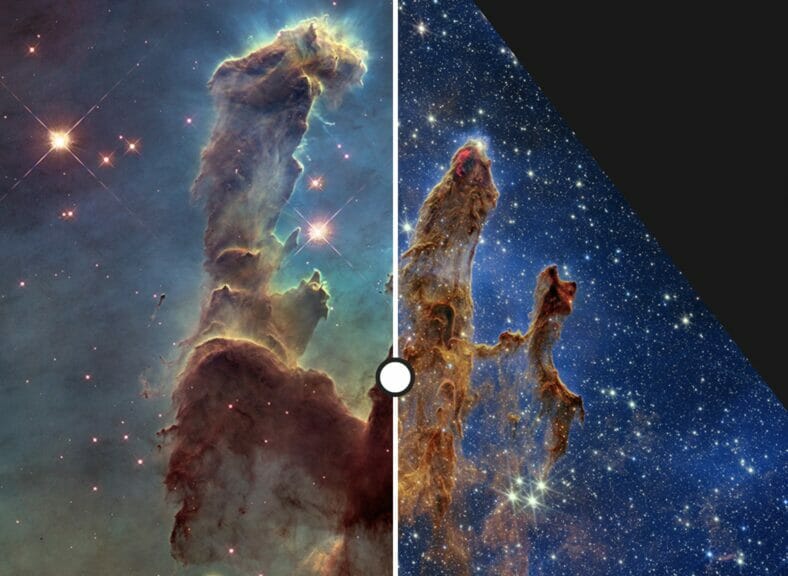The super space telescope, the James Webb telescope, has recently released new sights of the cosmos. And, as always, they are breathtaking.
The ‘Pillars of Creation’ are found in the Serpens constellation, which is around 6,500 light-years away from Earth. They are composed of dense clouds of hydrogen gas and particles of dust.
The clouds are at the core of Messier 16 (M16), or what many astronomers refer to as the Eagle Nebula. This nebula is known for its active star-forming location.
The most successful images ever taken of these ‘pillars’ with a telescope were done in 1995 first, and then in 2014.
Although they are easy to spot with most large telescopes, the bettering of technology throughout the years is allowing scientists to gain better and more refine perspectives of these dense clouds.
Indeed, James Webb has provided us with the most resolute image of the ‘Pillars of Creation’ so far.
This is thanks to the infrared technology incorporated in the James Webb telescope. The telescope was a collaboration between the US, Europe, and Canada’s leading space agencies. It launched in December 2021, and is the successor of the Hubble Space Telescope.
It has infrared detectors which help to see past light-scattering views. The dust from the ‘pillars’ creates a distorted vision of light, making it hard for most normal telescopes to examine what is going on amongst the clouds. With infrared detection, the telescope is able to analyse the birth of new suns, stars, and other activity that is ongoing in the heart of the Eagle Nebula.

Professor Mark McCaughrean, the Senior Advisor for Science at the European Space Agency, spoke with BBC news about his time dedicated to studying the Eagle Nebula since the 1990s.
Professor McCaughrean says,
I’ve been studying the Eagle Nebula since the mid-1990s, trying to see ‘inside’ the light-years long pillars that Hubble showed, searching for young stars inside them. I always knew that when James Webb took pictures of it, they would be stunning. And so they are.
Prof Mark McCaughrean, BBC

The nearby massive stars surrounding the Nebula are what help illuminate the ‘pillars’ and give them a sense of shape. The intense ultraviolet light from these stars is also what causes the ‘pillars’ to change shape and dismantle their towers. Because of the force of radiation, these ‘pillars’ have a short life before they become mutated and dismantled by the radiation of nearby stars. The resoluteness of the image is because it was taken in the past – a typical trick of space and time. The light that reaches the Webb telescope travels for 6,500 years before it reaches the mirrors on the other end, which scientists can then see.

Hard to grasp, but space does what space does best.
See here the other images James Webb has been able to take of our cosmos like never before.














